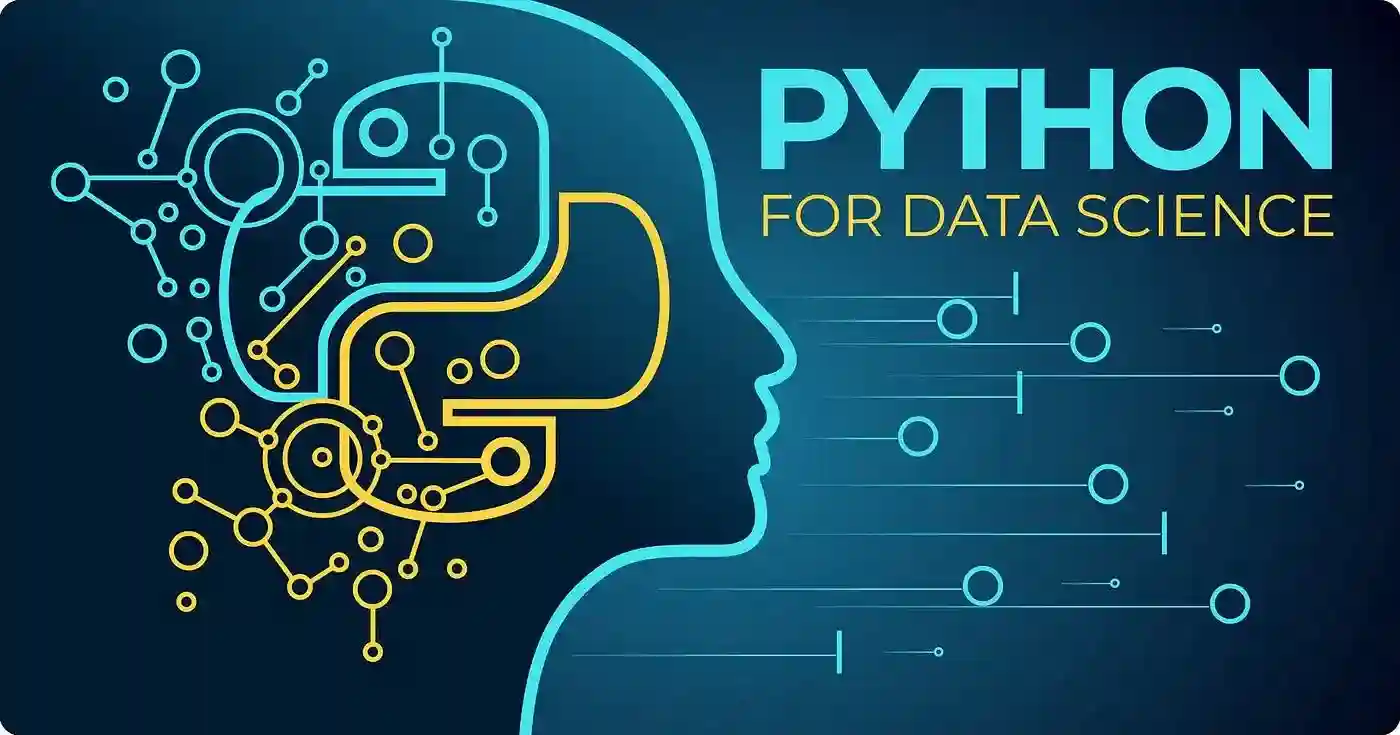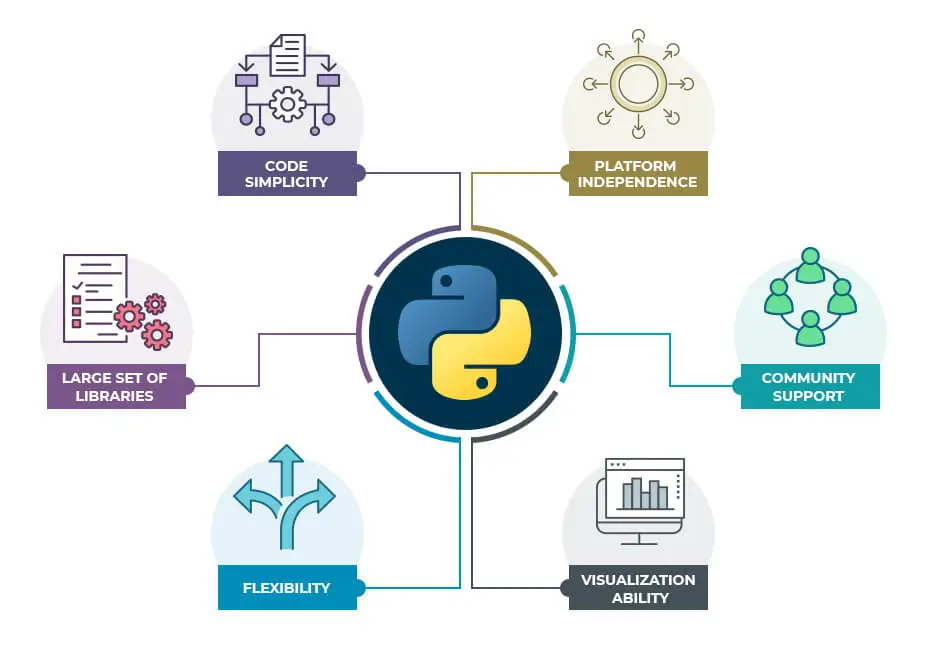Why Is Python The Best Choice For AI And Machine Learning?
Artificial Intelligence and Machine Learning are becoming increasingly popular in the IT industry. With the exponential growth in data volumes and complexity, AI and ML are increasingly being employed for data processing and analysis. While the human brain can analyze data, its capacity is limited by the amount of data it can process at any given time. Artificial intelligence, on the other hand, is not bound by this limitation. The use of AI and ML leads to more accurate predictions and insights, resulting in enhanced business efficiency, lower production costs, and increased productivity. Using Python for AI and Machine Learning will transform the businesses operations by helping them to make data-driven decisions which can drive growth and success.
The selection of the appropriate programming language is crucial to the successful implementation of AI and ML, as it must be capable of handling complex processes while being user-friendly and easy to support. Companies are realizing the value of Python in AI and machine learning development. Python’s ability to handle complex tasks has made it a must-have tool for both large corporations and startups. As a result, the IT industry now has a greater need for Python developers. In this blog, we’ll explain why Python is used in artificial intelligence and machine learning.
Why Use Python For Machine Learning and AI?
Python is rapidly emerging as one of the leading programming languages for AI and ML development. So, let’s check out some benefits of using Python for artificial intelligence and machine learning.
Simple And Consistent
The simplicity of the Python programming language is one of the primary reasons why it’s a popular choice among developers. Its easy-to-understand codes make it accessible to all, simplifying the basics of machine learning for everyone. Although AI and ML algorithms are complex, Python’s ease of use ensures that businesses can understand and utilize the code’s benefits.
Many developers consider Python to be a better programming language than others because of its ability to simplify complex concepts and promote collaboration. Python’s flexibility as a general-purpose language makes it ideal for handling complex tasks with ease. A number of software training institutes provide Python Training in Chennai for beginners to master the Python for the same purpose.
Extensive Selection Of Libraries And Frameworks
It can be difficult and time-consuming to implement AI and ML algorithms. For developers to produce the most effective coding solutions, a well-organized and thoroughly tested environment is essential. Python has a large selection of AI and machine learning libraries because of its robust technology stack.
Programmers use a variety of Python frameworks and modules to speed up development. Software libraries are collections of pre-written code that programmers utilize to handle typical tasks related to programming.
Additionally, a large number of Python IDEs offer a complete toolkit for testing, debugging, restructuring, and automation in a single interface. You can create your product more quickly using these solutions. By utilizing existing libraries, the developers on your team don’t have to create all the functionality from scratch. To know more about the IDE’s, you should have the idea about Role of Python in Data Science so that, it will give a broader view.

Large Developer Community
In terms of community, no other programming language can compete with Python’s popularity. There are different levels of support and packages available for developmental activities, catering to both individuals and institutions. Python’s popularity and growth are supported by the large community and ecosystem that have grown up around it as a result of its versatility and strength. The community is an excellent platform to locate like-minded people, positions, forum discussions, mentoring, troubleshooting support, and documentation.
Flexible Language
Python programmers adore the language because it gives developers the greatest amount of freedom for AI applications. You can also select OOPS or write code-based programs using Python for machine learning applications. It permits rapid result viewing without requiring a complete recompilation of the Python code.
Python software is available in four distinct architectural categories such as imperative, object-oriented, functional, and procedural. Each one lowers the possibility of errors, depending on the AI project.
Platform Independence
In addition to being flexible, Python is also a multi-platform language, implying it can be used on almost any platform. This has made Python the finest option for the development of AI and machine learning. The majority of popular operating systems may be used to produce standalone executable programs using Python code, making it simple to distribute and execute Python software on those platforms without installing an interpreter for Python. There is no need to make major changes when moving code written in Python from one platform to another.

Python’s popularity stems from its platform independence. For computing requirements, developers typically use services like Google or Amazon. However, there are many companies and data scientists who train their ML models on their own computers using powerful Graphics Processing Units (GPUs). Python’s platform independence makes this training much more affordable and simple.
Readability
One of the most popular platforms that offers readability is Python. Beginners can quickly share and alter the programs because it is a simple-to-read programming language. Python is very straightforward, in contrast to other programming languages. The ability to quickly learn a programming language is crucial for exchanging concepts, tools, and algorithms. If you are a beginner, join Infycle to learn the Python programming language.
Less Coding
The field of artificial intelligence is evolving quickly. As a result, deploying AI effectively will necessitate the use of several algorithms. When developing AI and ML applications with Python, you can choose from a wide range of predefined packages.
Due to the established packages in Python, you do not need to engage in hard-core coding. With the aid of the programming language’s “check your code” functionality, the entire process becomes more manageable, and you won’t have to test your code independently.
Better Visualization
We are aware that Python has a wide range of libraries available online, and the majority of these libraries have unique visualization features. When it comes to artificial intelligence, developers must appropriately highlight pictures to attract attention. It also plays an important role in presenting data in a clear manner.
Python Data Tools
Python also draws the attention of data scientists because it provides a comprehensive set of data tools. Of course, we know that data is the foundation for AI and machine learning. When comparing Python to the R language, there is a significant gap, although R is another popular option for AI programming. In the field of AI, R appears to be a domain-specific language, but Python offers powerful, full-featured tools for obtaining visualizations and determining patterns in just one language.
Wrapping Up
Artificial Intelligence and Machine Learning are continually growing and bridging gaps in numerous industries. Python provides excellent features for developing AI and machine learning. It has a variety of distinctive features that are rarely available in other programming languages. Because of its simple syntax, basic control flow, and ease of use with libraries and data structures, Python is the best language for developing AI algorithms. The integration of Python into AI and ML technologies helps in providing solutions to real-life challenges too. Thus, Python developers are in demand in most companies.





